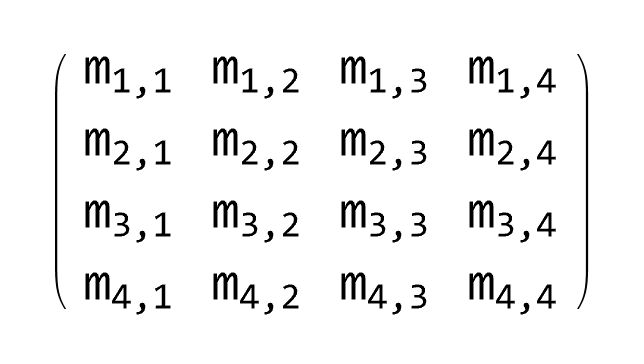Exercises
Block Matrices
-
The inverse of block matrix \( \displaystyle \quad \begin{bmatrix} \mathbf{I} & \mathbf{0} & \mathbf{0} \\ \mathbf{A} & \mathbf{I} & \mathbf{0} \\ \mathbf{B} & \mathbf{C} & \mathbf{I} \end{bmatrix} \quad \) is \( \displaystyle \quad \begin{bmatrix} \mathbf{I} & \mathbf{0} & \mathbf{0} \\ \mathbf{X} & \mathbf{I} & \mathbf{0} \\ \mathbf{Y} & \mathbf{Z} & \mathbf{I} \end{bmatrix} . \quad \) Find matrices X, Y, and Z.
-
Let X be an m × n data matrix such that XTX is invertible,
and let M = Im − X(XTX)−1XT. Add a column x₀ to the data and form the augmented matrix
\[
{\bf W} = \begin{bmatrix} \mathbf{X} & \mathbf{x}_0 \end{bmatrix} .
\]
Compute WTW. The (1, 1)-entry is XTX. Show that the Schur complement of XTX can be written in the form x₀T M x₀. It can be shown that the quantity (x₀T M x₀)−1 is the (2, 2)-entry in WTW. This entry has a useful statistical interpretation, under appropriate hypotheses.
-
-
-
-
-
Determinants
Cofactors
Cramer's Rule
Partitioned Matrices
Elementary Matrices
Inverse Matrices
Elimination:
A =
LU
-
Without row exchange, use elementary matrices to find LU-factorizations for
the following matrices.
\[
\mbox{(a)} \quad \begin{bmatrix} -8&-5&-6&5 \\ 3&-6&7&-3 \\ -10&-3&4&2 \\
5&-5&7&8 \end{bmatrix} ; \qquad \mbox{(b)} \quad \begin{bmatrix} 2&1&-1&0 \\
4&3&3&1 \\ 8&7&9&5 \\ 6&7&9&8 \end{bmatrix} ; \qquad \mbox{(c)} \quad
\]
-
-
PLU Factorization
-
Using row exchange and elementary matrices, find PLU-factorizations for
the following matrices.
-
\[
\mbox{(a)} \quad \begin{bmatrix} -9&8&-3&0 \\ -9&-5&5&1 \\ 6&7&3&5 \\ 6&-2&6&7
\end{bmatrix} , \qquad \mbox{(b)} \quad \begin{bmatrix} 5&2&-5&0 \\
6&-8&-8&-4 \\ 2&9&-9&2 \\ -1&6&6&-6 \end{bmatrix}
\]
-
-
Reflection
Givens Rotation
Special Matrices

